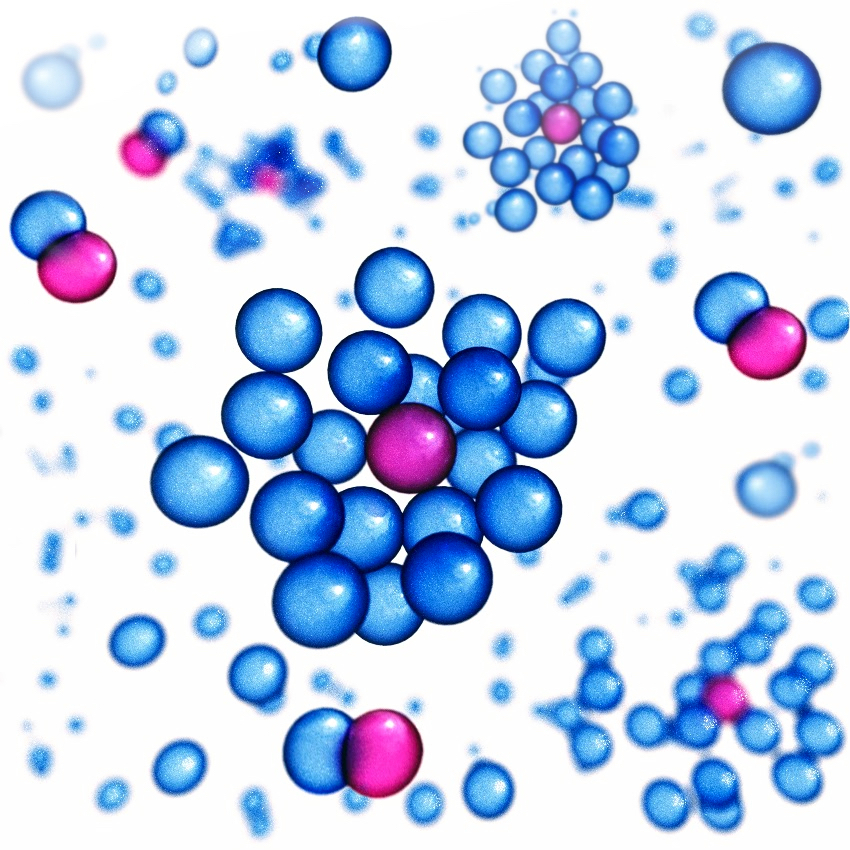What happens if one has a quantum impurity in a Fermi Gas? Well this impurity attracts the surrounding fermions toward itself, creating a quasiparticle called a polaron. To make things more interesting, we can increase the interaction intensity, binding the impurity to only one fermion instead of many! This creates a stable molecular state.
Theoretically, one would expect a single transition to be abrupt and sudden. However, we do not know what happens when we have an entire population of impurities. Moreover, what happens at other conditions than that of the usual finite temperature and impurity density regime?
We, Oriana, Jonas, and Richard, along with our colleagues from Technion, Israel, have studied just that! We look at this from both the experimental and theoretical point-of-view.
Our colleagues at Technion conducted experiments using a spin-imbalanced ultracold Fermi gas with tunable interactions, as well as a novel Raman spectroscopy combined with a high-sensitivity fluorescence detection technique. They could then measure the proportion of impurities that adopted polaron and molecular states under different interaction intensities.
The experiments yield a very satisfying result: we observe a continuous variation of all observables. There is indeed a smooth transition between polarons and molecules! Futhermore, our theoretical model is in good agreement with the smooth transition observed.
Beyond the concrete result of our work, the novel use of Raman spectroscopy could turn out to be extremely valuable in the field, namely when it comes to studying mobile quantum impurities.
Our findings were published today in Phys. Rev. X, you can find out more about it in the link below.
Smooth Polaron-Molecule Transition in a Fermi Gas: Experiments & Theory
- Gal Ness, Constantine Shkedrov, Yanay Florshaim, Oriana K. Diessel, Jonas von Milczewski, Richard Schmidt, and Yoav Sagi, Observation of a Smooth Polaron-Molecule Transition in a Degenerate Fermi Gas, Rev. X 10, 041019



Comments are closed